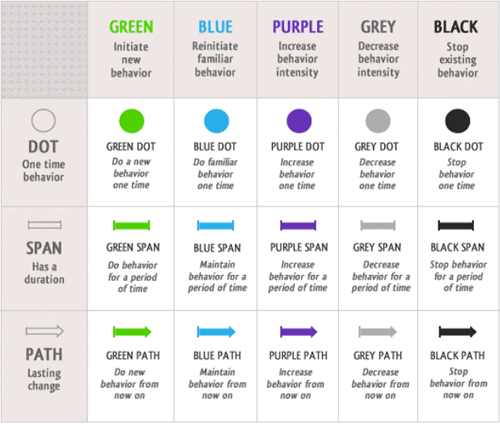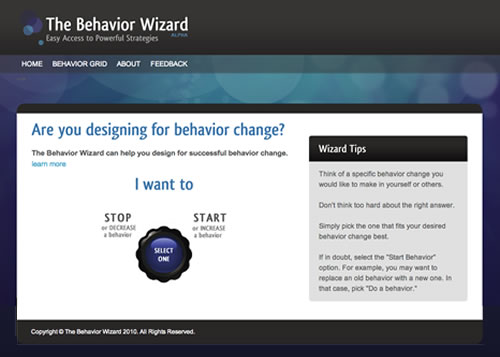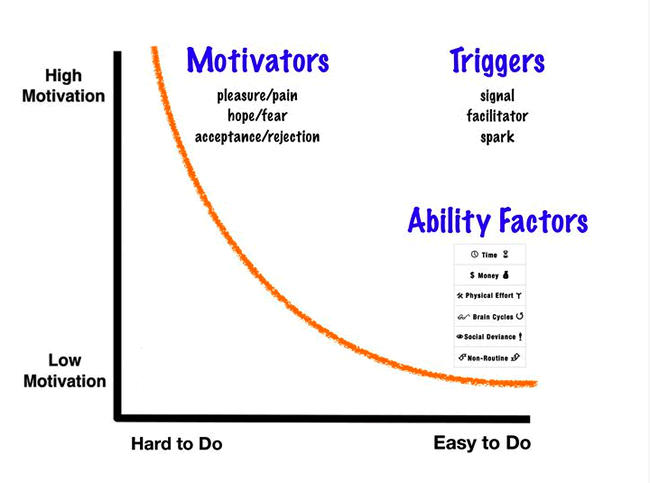Website Credibility
These slides are part of a two-week curriculum on web credibility. There is also a step-by-step lesson plan that goes along with this.
These slides are part of a two-week curriculum on web credibility. There is also a step-by-step lesson plan that goes along with this.
Why is Facebook News Feed brilliant? It puts hot triggers in the path of motivated people. In this video, you will also see why some news feed content gets “liked”, while others cause frustration.
See examples of how hot triggers in YouTube videos gave one YouTube star more control over what his users watched and helped a charity fundraise $10,000 in one day.
How did Twitter ever become so popular? This video answers this through the lens of the Fogg Behavior Model used by the Persuasive Technology Lab at Stanford.
This video introduces the new Purple Path Behavior Guide from the Persuasive Technology Lab at Stanford University, the first in the Behavior Wizard Guides series. Learn how to use persuasive techniques for behavior change to increase how much you exercise, read, sleep, or pretty much anything.

There are 15 distinct behavior types as outlined on the Behavior Grid.
If you are a designer of health interventions, it’s important to know exactly what type of behavior you are designing for. Techniques may differ depending on the type of behavior “flavor”. The slideshare below explains the various behavior types and examples for each.
We find that people sometimes need a little help navigating the grid at first. If you want help determining your target behavior type, use the Behavior Wizard to guide you through the process. In addition, the lab has produced Behavior Guides for each of the behavior types, accessible after completing the Behavior Wizard.

Are you designing for behavior change? The Behavior Wizard can help you design for successful behavior change. The Behavior Wizard is a method for matching target behaviors with solutions for achieving those behaviors.
Learn more on the Behavior Wizard project page or visit www.behaviorwizard.org

What Causes Behavior Change? My Behavior Model shows that three elements must converge at the same moment for a behavior to occur: Motivation, Ability, and Trigger. When a behavior does not occur, at least one of those three elements is missing. Learn more at www.behaviormodel.org
This paper presents a new model for understanding human behavior. In this model (FBM), behavior is a product of three factors: motivation, ability, and triggers, each of which has subcomponents. The FBM is useful in analysis and design of persuasive technologies.
Download the paper, A Behavior Model for Persuasive Design. (PDF)
 The Stanford Persuasive Tech Lab performs research into computers as persuasive technologies and its ethical use. It is part of H-STAR, the Human Sciences and Technologies Advanced Research Institute at Stanford University.
The Stanford Persuasive Tech Lab performs research into computers as persuasive technologies and its ethical use. It is part of H-STAR, the Human Sciences and Technologies Advanced Research Institute at Stanford University.
The study of persuasive technology began at Stanford in the 1990s. As a Stanford doctoral student (1993-1997), BJ Fogg used methods from experimental psychology to demonstrate that computers can change people’s thoughts and behaviors in predictable ways. His thesis was entitled “Charismatic Computers.” BJ Fogg went on to found the lab in 1998.
Persuasive technology is now a global area of research and design. In the early days, the lab was doing research, conducting classes, and organizing events at Stanford.
People often ask how they can learn more about captology. First of all, read the material on this website. After that, check out some of the items below: